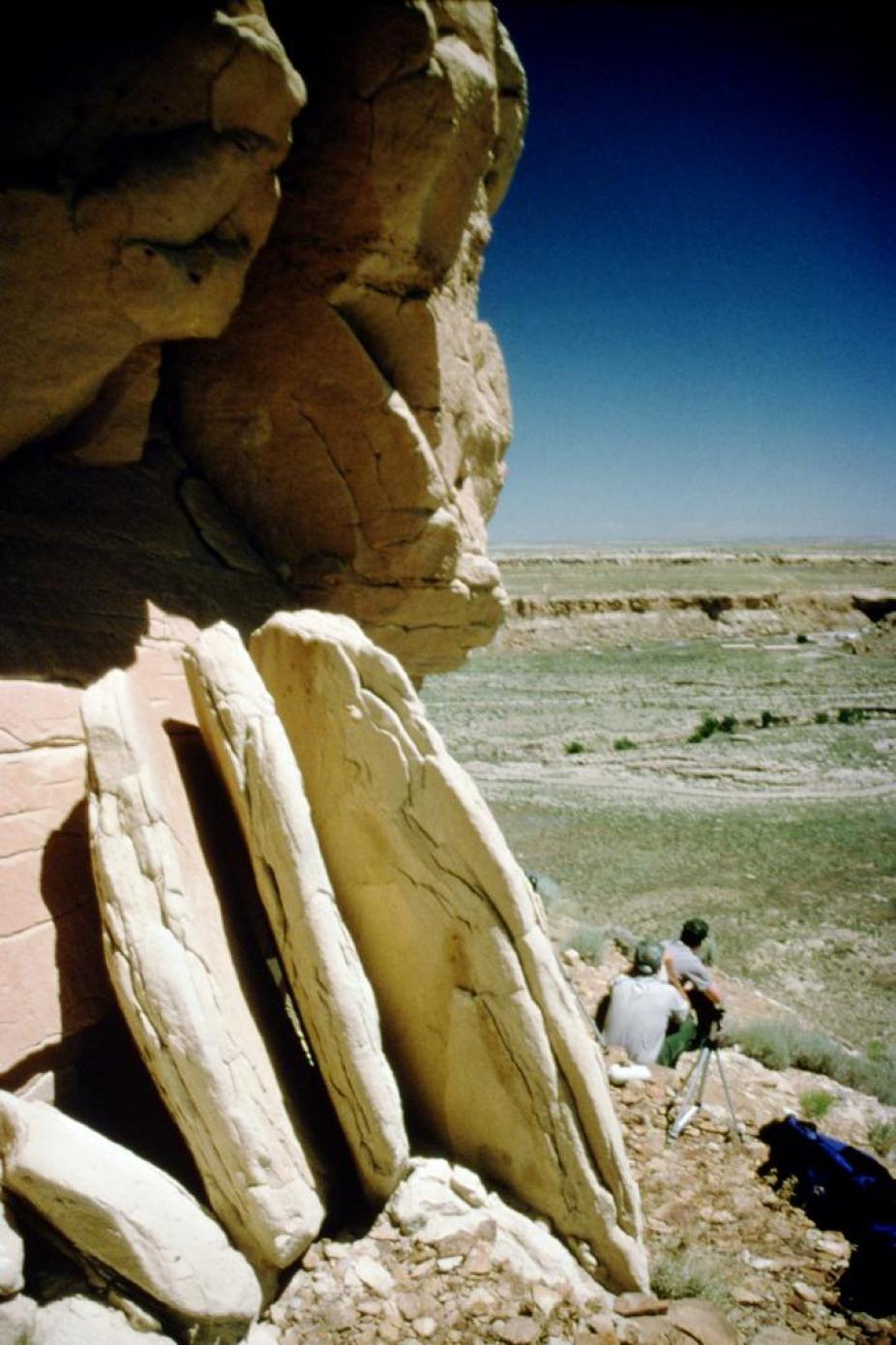The 3-Slab Slit
The three sandstone slabs located at the foot of the uppermost 10-meter high cliff band of Fajada Butte are 2 to 3 meters high, 0.7 to 1 meter wide, and 20 to 50 centimeters thick. They are estimated to weigh each around 2 metric tons (2000 kg). Geologic evidence indicates that the slabs were originally part of a single large block which broke off from the cliff face to the left of their present position and toppled over, fracturing along two weaker bedding planes upon impact. The three slabs do not touch, being separated from each other by narrow gaps about 10 centimeter wide. The solar marker nature of the site was discovered serendipitously in 1977 in the course of a survey of petroglyphs on the butte.

The three slab site on the East face of Fajada butte.
The slabs rest almost vertically against the smooth cliff face, fanning out to the South. They form the side wall and roof of an elongated triangular niche which remains shaded except around midday when sunlight shines through the openings between the slabs. The cliff wall is illuminated in this way for about 25 minutes near summer solstice, and up to three hours near winter solstice when the Sun is lower in the sky. A large rock overhang situated above the site (visible on this photograph) shades the slabs when the Sun's altitude exceeds 75o.
Considerable controversy regarding the possible man-made nature of the 3-slab site developed following the first reports of its operation as a solar calendar. Further studies yielded several lines of evidence indicating that the site is the result of a natural rockfall, rather than an Anasazi construct. The Anasazi were not in the habit of using large stones for their constructions, except as foundation for the large roof posts of their great kivas. Even then, the slabs are some five times heavier than the heaviest such foundation stones unearthed in Chaco Canyon. The Chacoans were clearly very adept at masonry work, and have been known to construct supporting walls to buttress large rocks perched in positions posing a threat to their dwellings, most notably behind Pueblo Bonito. Yet no sign of any such reinforcement work is to be found around the 3-slab site. It has also been noted that geological formations resembling the 3-slab site are common throughout the canyon, and examination of the base of the slab indicates that a piece of one of the slab broke on impact, arguing against the slabs being artificially positioned by human hands.